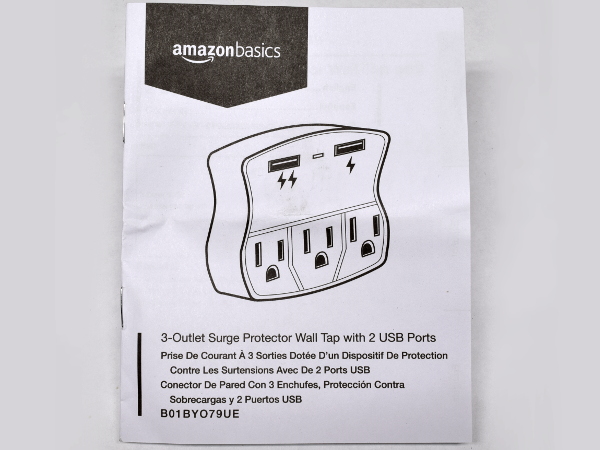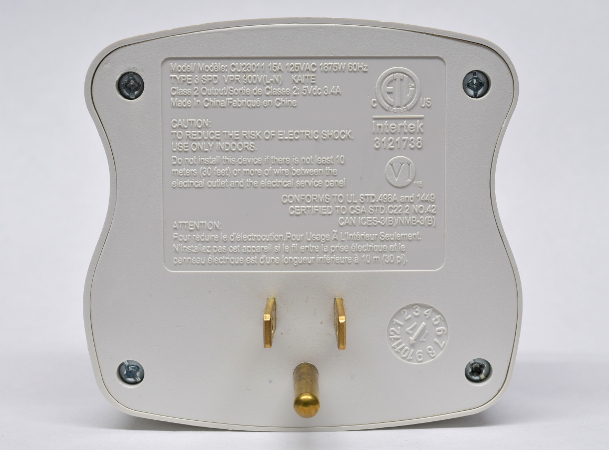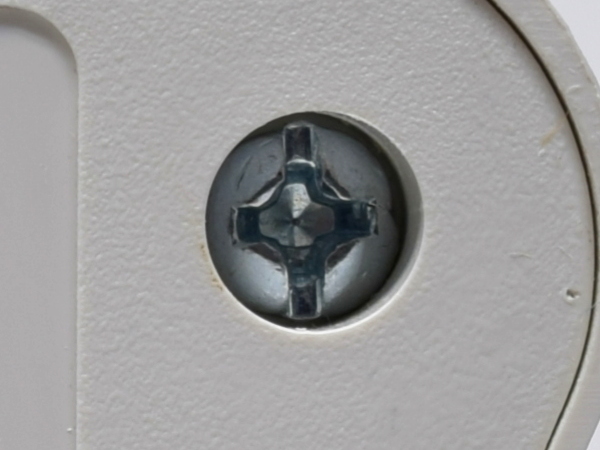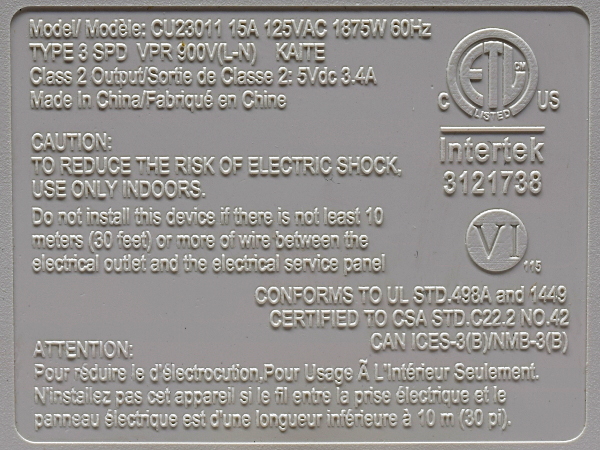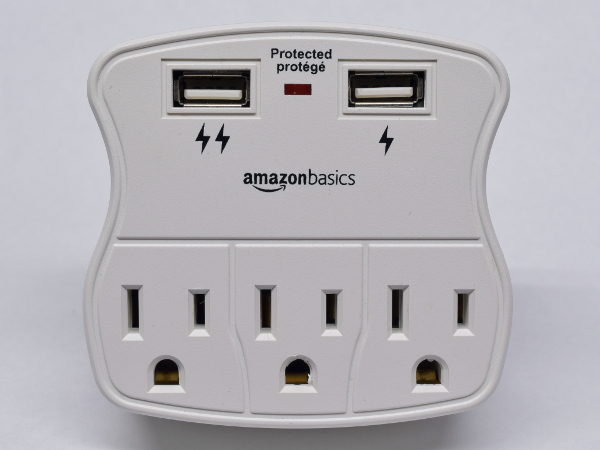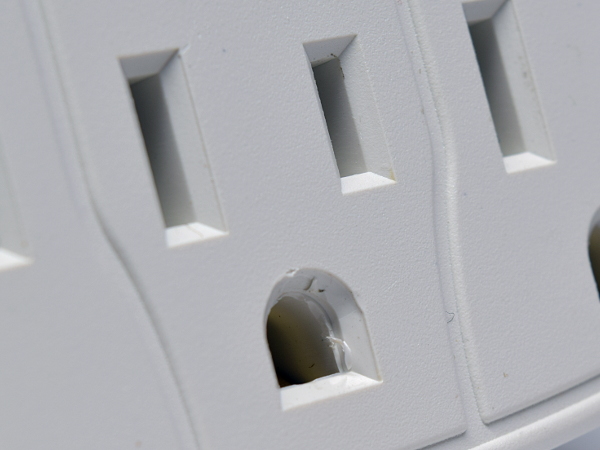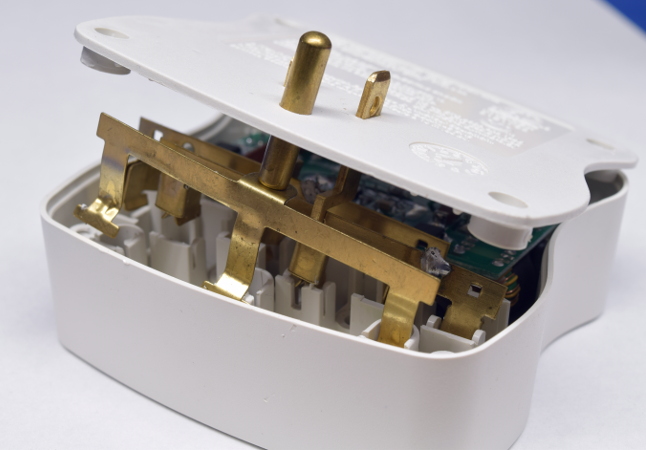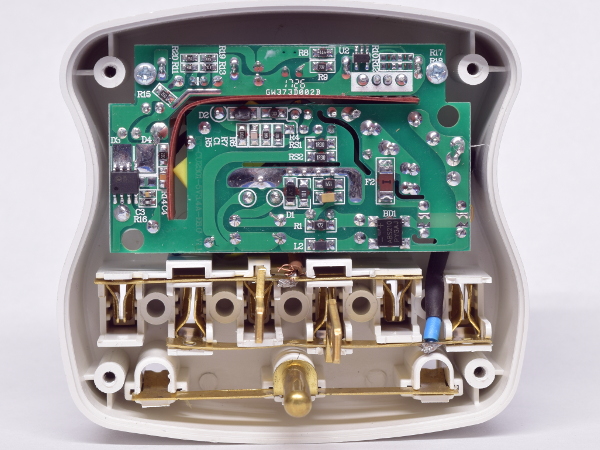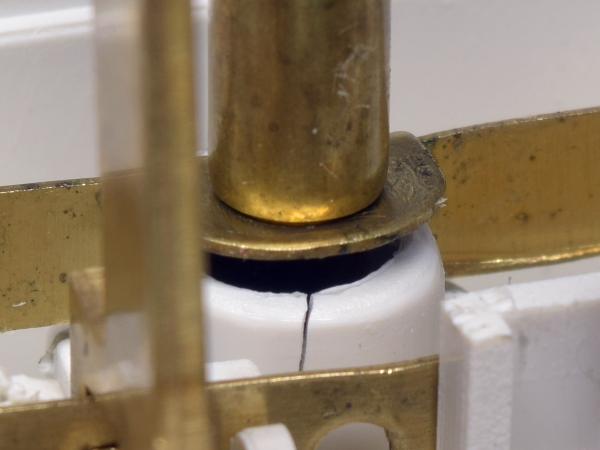AmazonBasics CU23011W Tap-Adapter: Top Performance, Imperfect Design
The AmazonBasics CU23011W
Since I began tearing down USB adapters, a clear trend has started to emerge: everything under $4 is garbage in my performance and safety testing, while products from about $10 and up are generally pretty good. Of course, the cheap units are generic, while the pricier ones come from known brands with a reputation to maintain, skewing my expectations somewhat.
Today, we’re fleshing out the $10 category some more with the addition of Amazon’s house-brand CU23011W tap-adapter.
Packaging
In typical fashion, the CU23011W arrives in Amazon’s generic brown box with its black-on-white branding and description label doubling as the box’s seal. Inside, a secondary cardboard insert cradles the combo tap-adapter to prevent it from rattling around during shipping. Though basic, this does a fine job of moving products from factories, through the warehouses, and to your doorstep in good physical condition.
Accessories
How many accessories would you expect a (presumably) decent-quality and safe $10 adapter to ship with? The only thing included in the box, aside from the CU23011W itself, is a trilingual (English/Spanish/French) manual. The documentation predictably explains that the port with two lightning icons is rated for 2.4A, while the other is only good for 1A. Half of a page is dedicated to telling you how to plug devices in, another half covers the usual surge protector cautions and warnings, and the rest discusses regulatory compliance and warranty coverage.
As you would expect from a better-known brand, the manual appears to be written in proper English. I skimmed the French section, and that also seemed adequate. I presume Amazon didn’t skimp on the Spanish translation either.
Back
Labeling consumes most of the back side's surface area. We also get four screws, the prong trio, and a date dial indicating that the housing was made in October 2017 (just three months prior to my order).
Screws! Beautiful Screws!
Perhaps I'm being overly dramatic, but when a majority of AC adapters are sealed shut, I get a little excited about the prospect of putting an adapter back together after I'm done testing it. There's none of that tamper-resistant rubbish here, just plain Phillips-head screws.
Get Tom's Hardware's best news and in-depth reviews, straight to your inbox.
Label
As is almost always the case with power outlet accessories, the multi-tap is rated for 15A. In the surge suppression department, we have 900V live-to-neutral with the relevant UL/CSA standards on its ETL records, and nothing for the other two possible pairings. The USB output is specified as 3.4A with Level VI efficiency. However, the ETL records lack anything related to information technology equipment.
Cautions include the standard dry location-only and instructions not to install surge protection on outlets with less than 10 meters of wiring to the breaker box.
Also, Ã doesn’t exist in French. That should have been À.
Front
Up front, we find three power outlets, two USB ports, and the protection indicator LED. Again, the port with two lightning bolt icons is intended for high-draw devices. But how much would you bet that they're internally connected in parallel, just like every other sub-8A adapter so far?
The power outlets are barely spaced far enough apart to accommodate straight plugs. For anything else, you'll almost certainly have to forfeit the middle outlet to plug in more than one other cord or adapter.
It Burrs
All three outlets show some degree of molding flash around the ground hole’s bevel, though the center outlet has it much worse than the other two. This picture was taken before even using the CU23011W. Could there be a molding issue? Did I inherit someone’s return? Was the damage caused by factory quality control? With some luck, we’ll find clues within.
Cracking Open
When I first saw the screws, I thought this tap-adapter combo would come apart easily. It did, for the most part, though it took me about two minutes to realize that the prongs were tight-fitted through the rear cover and needed to be pushed back out to gain access.
It looks like we may have a couple of interesting design arrangements to analyze, such as the ground bus that doesn’t look like anything I have come across previously.
First Peek
This is one neatly packed device. It shows very little wasted space and what could be one of the most promising circuit boards I've seen (based on that gigantic isolation slot and mirror-finish soldering).
With the board’s jumper wires running under the board, and the board screwed into the front cover, I was never going to get the cover off until I figured out I had to press the pins back through.
Ground Oddities
I have never used this tap-adapter before, and its ground contacts are on the opposite side of the prong holes where they can’t put any force across the hole. Yet, the prong shaft wall for the center outlet is cracked. This strongly suggests that the cosmetic damage at its entrance was indeed caused by someone struggling to plug something in.
How is the ground pin actually attached to the strip? From this angle, the connecting end looks tapered. There are no signs of welding or soldering. Is it screwed in from the other side? Prepare for disappointment.
-
Daniel Sauvageau Readers wanted a break from generic no-name adapters. Here's something a little different.Reply -
Daniel Sauvageau Reply
They always are. Only one transformer, so no independent regulation. Only one transformer secondary and only one synchronous rectifier, so no isolation between outputs. No electronic fuses or PPTCs either, not really a problem when output current is only 4A with limited duty cycle.20964213 said:you never let us know if the two outputs where indeed connected in parallel.
I doubt we'll be seeing independently regulated 5V outputs in any adapter. At most, we might get a DC-DC converter in QC/USB-PD adapters with some fixed 5V ports. -
ElectrO_90 Americans and the use of Metric... doesn't compute! I need my 7/87ths of a inch measurement ;)Reply -
Daniel Sauvageau Reply
I'm Canadian :)20965184 said:Americans and the use of Metric... doesn't compute! I need my 7/87ths of a inch measurement ;) -
Onus I really enjoy these teardowns. Between you & Aris, it keeps my inner geek well-fed. When I buy a multi-socket adapter of most any kind, often it is to put somewhere, plug in devices that wouldn't fit otherwise, and just leave it, so I'm less concerned about the physical wear issues than a frequent-plugger might be.Reply -
zodiacfml It's not bad till that wiggly part. It will just not pass much current. This will burn soon when used in the kitchen.Reply
I have an extension cord with USB charging ports and six AC outlets, it just costs a bit more but certainly safer, convenient, and can pass more current. -
froozeball Wonderful dissection as always Sir!Reply
It's like watching Auguste Dupin or Sherlock Holmes unravel the threads in a mystery, forming an inescapable conclusion.
Thanks for putting this type of product on my radar M. Sauvageau!


